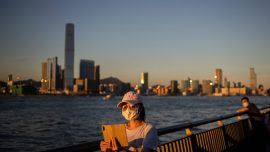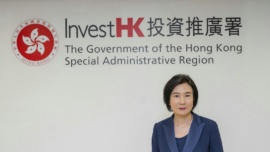As projects such as the Hong Kong-Zhuhai-Macau bridge – linking the Pearl River Delta into a mega-city – demonstrate, the continued trend for populations is to shift to urban areas, with a predicted 55 per cent of the global population living in these areas currently, according to data by Euromonitor International.
The group forecasts that the global population will hit 7.4 billion this year, of which over half, at 55.2 per cent, will be concentrated in Asia Pacific. This would be 5 percentage points higher than in 2007, the first time that the urban population numbers have overtaken those of the rural population.
Urban populations are predicted to rise to 4.4 billion this year, a 24.2 per cent increase from 2007, while the growth within Asia is predicted to reach 29.6 per cent this year.
City problems
This creates challenges, already commonly seen in the MSAR, notes the research group. ‘Overcrowding, housing shortage, lack of urban jobs, increasing pollution and associated health risks,’ were all noted as significant challenges brought about by urbanisation.
Although Macau’s unemployment rate only recently increased to 2 per cent, according to data from the Statistics and Census Bureau (DSEC), the other four issues are familiar to the local population and legislators alike.
DSEC data recorded 2.87 million visitors to the MSAR in January and that ‘neoplasms’ – abnormal tissue growth linked to cancer – were the leading cause of death in the territory in 2015, while public housing is one of the main components of the government’s most recently announced five-year plan.
However, not all the impact of this expansion will be negative, notes the report.
‘The transition to smaller-sized households in cities compared to rural areas will further give rise to new consumption trends and boost demand for goods and services,’ as well as ‘spur economic growth, as cities draw in diverse businesses which in turn generate investment and economic activity.’
Data from the Macao Trade and Investment Promotion Institute reveals that 3,345 newly incorporated companies joined the business framework of the MSAR between the first and third quarter of last year, while the previous year 5,023 new companies opened.
Getting older
In addition to a more urban population, the bi-product of this urbanisation is an ageing population, which will hit a median of 30.1 years for the first time this year – up from 27.9 per cent a decade ago. By the end of this year, according to the data, from 2007 the population group aged 65 and older will have risen by 31.4 per cent, whereas the youngest demographic, under-15s, will grow only 15 per cent.
‘Population ageing hugely impacts consumer goods industries, presenting them with a plethora of opportunities to provide senior consumers with goods and services to meet their changing lifestyles, shopping and spending habits, widely varying income and wealth levels, expectations and needs,’ notes the report.
This will hit areas from transportation and technology to technology and financial services, and estimates are that a baby born this year can expect to, on average, live to be 72.2 years old, with 63.7 years of these in “full health”. The average life expectancy at birth in the MSAR, according to the DSEC, rested at 83.3 years of age, as of the most recent data.
However, these opportunities are mitigated by a trend in which ‘people around the world consume more calories and become increasingly sedentary,’ leading to an estimate that 9 per cent of the world population between 20 and 79 years of age will suffer from diabetes. This will ‘fuel both government and consumer spending on healthcare,’ a problem for the public sector and a potential advantage to the private sector.
























